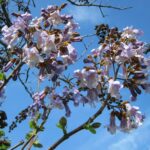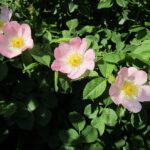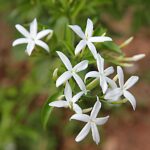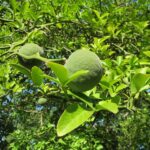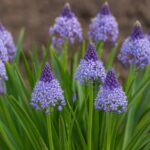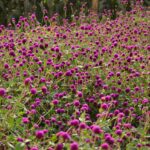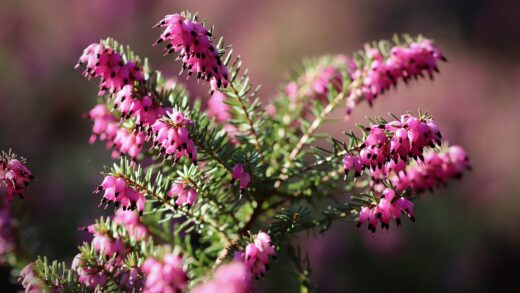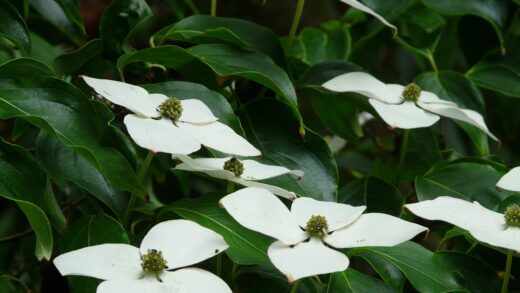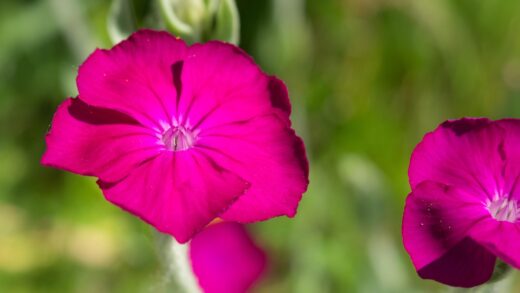Understanding the fundamental needs of Hypericum androsaemum is the very cornerstone of successful cultivation, a process that rewards the attentive gardener with a display of vibrant foliage, cheerful yellow flowers, and striking berries. This resilient shrub, often appreciated for its multi-seasonal interest, is not overly demanding, yet it thrives when its basic requirements for light, water, and soil are met with consideration. It establishes itself as a versatile component in various garden designs, from informal borders to more structured woodland settings. A proactive approach to its care, beginning with proper site selection and soil preparation, will prevent many common issues and ensure the plant has a vigorous start, setting the stage for years of aesthetic appeal and robust health.
Properly siting the plant is a critical first step that influences its long-term vitality more than almost any other factor. Tutsan demonstrates a remarkable adaptability to a range of light conditions, flourishing in everything from full sun to partial shade. However, for the most prolific flowering and subsequent berry production, a position that receives at least a few hours of direct sunlight each day is considered ideal. In hotter climates, some afternoon shade can be beneficial, protecting the foliage from scorching and reducing water stress during the peak of summer. Careful observation of the potential planting area throughout the day will reveal the perfect spot that balances these needs.
The soil environment is another pillar of successful care, with this particular shrub showing a clear preference for well-drained conditions. It is intolerant of waterlogged soil, which can quickly lead to root rot and the overall decline of the plant’s health. Before planting, it is wise to amend heavy clay soils with organic matter such as compost or well-rotted manure to improve its structure and drainage. Conversely, overly sandy soils can be enriched to enhance their water and nutrient retention capabilities. A soil pH that is slightly acidic to neutral is optimal for nutrient uptake and vigorous growth.
Ongoing maintenance throughout the year, while not intensive, is key to keeping the plant looking its best. This includes routine tasks such as monitoring soil moisture, managing competition from weeds, and observing the plant for any early signs of distress, disease, or pest infestation. A layer of organic mulch applied around the base of the shrub can be immensely helpful, as it suppresses weeds, conserves soil moisture, and gradually breaks down to enrich the soil. This simple practice reduces the overall maintenance workload while providing tangible benefits to the plant’s health and performance in the garden landscape.
Seasonal care considerations
Spring is a season of renewal and a crucial time for setting up Hypericum androsaemum for a successful growing season. As the threat of hard frost passes and new growth begins to emerge, it is the ideal moment to perform any necessary pruning to shape the plant and remove winter-damaged stems. This is also the time to apply a balanced, slow-release fertilizer to provide the essential nutrients needed for vigorous new foliage, strong flower development, and ultimately, a bountiful display of berries. A top-dressing of compost around the base of the plant will also give it a welcome boost as it exits dormancy.
More articles on this topic
As the garden moves into the full swing of summer, the focus of care shifts towards ensuring adequate moisture and monitoring the plant’s overall health during the warmest part of the year. While established plants are reasonably drought-tolerant, they will perform much better with consistent watering, especially during prolonged dry spells. The vibrant yellow flowers, which are a primary feature of the summer display, will be more abundant on a well-hydrated plant. It is also important to remain vigilant for signs of pests or diseases, which can become more prevalent in the heat and humidity of the summer months.
Autumn marks a beautiful transition for the plant, as the spent flowers give way to the development of the characteristic berries, which change in color from red to a glossy black. The primary care task during this season is to appreciate this ornamental display while ensuring the plant is prepared for the coming winter. Watering can be gradually reduced as temperatures cool and rainfall typically increases. It is also a good time to clear away any fallen leaves or debris from around the base of the plant to reduce the chances of fungal diseases overwintering.
Winter care for this hardy shrub is generally minimal, particularly in milder climates where it may remain semi-evergreen. The main objective is to protect the plant from the harshest elements, such as extreme cold and drying winds, which can damage the stems and any lingering foliage. In regions with heavy snowfall, the weight of the snow can sometimes cause branches to break, so gently brushing it off after a heavy fall can be beneficial. For younger, less established plants, a protective layer of mulch around the root zone provides valuable insulation against deep ground freezes, safeguarding the plant’s core until spring returns.
Soil and location management
The physical and chemical composition of the soil plays a pivotal role in the long-term success of growing Hypericum androsaemum. An ideal soil structure is one that is friable and allows for the easy penetration of roots, air, and water. Heavy, compacted clay soils can be a significant challenge, as they retain excessive moisture and restrict root growth, leading to anaerobic conditions that are detrimental to the plant’s root system. Improving such soils by incorporating materials like coarse sand, grit, or organic compost before planting is not just beneficial but often essential for the plant’s survival and ability to thrive.
More articles on this topic
Conversely, soils that are excessively sandy or gravelly present a different set of challenges, primarily related to their poor water and nutrient-holding capacity. Water drains through these soils very quickly, taking essential soluble nutrients with it and leaving the root zone dry and impoverished. To counteract this, enriching the soil with generous amounts of well-decomposed organic matter is crucial. Materials such as compost, leaf mold, or aged manure act like a sponge, absorbing and retaining moisture and nutrients, making them available to the plant’s roots over a more extended period.
The pH level of the soil, which measures its acidity or alkalinity, is a critical factor that governs the availability of nutrients to the plant. Hypericum androsaemum performs best in a soil environment that is in the slightly acidic to neutral range, typically between 6.0 and 7.0 on the pH scale. In soils that are too alkaline, certain nutrients like iron can become locked up and unavailable to the plant, leading to deficiency symptoms such as yellowing leaves, a condition known as chlorosis. Simple soil testing kits are widely available and can provide valuable information, allowing for amendments like sulfur or ericaceous compost to be added if necessary to lower the pH.
Beyond the soil itself, the broader location within the garden landscape must be considered. Good air circulation around the plant is important for minimizing the risk of fungal diseases, such as rust, which can be a common affliction for this species. Planting it too close to other dense shrubs or in a stagnant corner of the garden can create a humid microclimate that encourages the proliferation of these pathogens. Therefore, providing adequate spacing between plants is a simple yet effective preventative measure that contributes significantly to the overall health management of the shrub.
Advanced pruning techniques
While basic pruning is sufficient for general maintenance, employing more advanced techniques can significantly enhance the ornamental qualities and health of Hypericum androsaemum. One such technique is renewal pruning, which is particularly useful for older, overgrown shrubs that have become woody and less productive. This method involves selectively removing about one-third of the oldest, thickest stems right down to the base of the plant over a period of three years. This encourages the growth of new, vigorous shoots from the base, effectively rejuvenating the entire shrub without a drastic hard cutback.
Directional pruning is another nuanced approach that can be used to control the shape and direction of the plant’s growth. This involves making pruning cuts just above a bud that is facing the direction you want the new growth to go. For example, if a branch is growing inwards towards the center of the shrub, pruning it back to an outward-facing bud will encourage a more open and less congested structure. This technique is invaluable for improving air circulation through the plant and for creating a more aesthetically pleasing form that fits well within its garden context.
Pinching back is a subtle but effective technique used during the active growing season, primarily on new, soft growth. By simply pinching off the terminal bud of a young shoot, the plant is stimulated to produce two or more new shoots from the nodes just below the pinch. This results in a much bushier and more compact plant with a greater number of flowering stems. This method is particularly useful for younger plants to encourage a dense habit from an early age, or to fill out sparse areas on a more mature specimen.
Deadheading, or the removal of spent flowers, is a common practice for many ornamental plants, and while not strictly necessary for Hypericum androsaemum due to its attractive berries, it can be employed for specific goals. If the primary objective is to encourage a second flush of flowers rather than berry production, diligently removing the faded blooms before they set seed can redirect the plant’s energy into producing more blossoms. This is a labor-intensive process and sacrifices the autumn and winter berry display, so the gardener must decide which ornamental feature is more desirable for their specific garden vision.
Watering and feeding strategies
Developing an effective watering strategy requires an understanding that consistency is more important than sheer volume. Deep, infrequent watering is far more beneficial than shallow, frequent applications. This approach encourages the plant to develop a deep and extensive root system, making it more resilient and self-sufficient during periods of drought. When watering, it is best to apply the water directly to the soil at the base of the plant, avoiding the foliage as much as possible. Wet leaves, especially overnight, can create an ideal environment for the development of fungal diseases.
The nutritional needs of Hypericum androsaemum are relatively modest, but a strategic feeding plan can promote more robust growth and a superior display of flowers and fruit. A balanced, slow-release granular fertilizer applied in early spring as new growth commences is often sufficient for the entire season. Look for a formulation with a balanced N-P-K ratio (Nitrogen-Phosphorus-Potassium) to support overall plant health, from strong leaf growth to vibrant blooms and healthy root development. Over-fertilizing, particularly with high-nitrogen feeds, should be avoided as it can stimulate excessive leafy growth at the expense of flowers.
Organic feeding options offer a gentle, sustainable approach to meeting the plant’s nutrient requirements. Materials such as garden compost, well-rotted manure, or leaf mold can be applied as a mulch or top-dressing around the base of the shrub. As these materials break down, they slowly release a wide spectrum of essential nutrients and micronutrients into the soil. Furthermore, they significantly improve the soil’s structure, water-holding capacity, and overall biological activity, creating a healthy and thriving environment for the plant’s roots.
It is crucial to be able to recognize the signs of both overwatering and underwatering, as both can be detrimental to the plant. Underwatering is typically characterized by wilting leaves, dry and brittle stems, and a general lack of vigor. Conversely, overwatering can be more insidious, with symptoms like yellowing leaves (starting with the lower ones), stunted growth, and a rotting smell from the soil, which indicates root decay. Adjusting the watering frequency based on visual cues from the plant, as well as prevailing weather conditions, is a key skill for maintaining its optimal health.
Long-term health and rejuvenation
Ensuring the long-term health of Hypericum androsaemum involves a holistic approach that extends beyond the day-to-day tasks of watering and feeding. It requires periodic assessment of the plant’s condition and a willingness to intervene when necessary to maintain its vitality. One of the key aspects of long-term care is managing the size and density of the shrub. Over time, without proper pruning, the plant can become large and congested, with a woody, non-productive center. This not only diminishes its ornamental value but can also harbor pests and diseases due to poor air circulation.
Rejuvenation is a critical process for older shrubs that have lost their vigor and form. A hard pruning, sometimes referred to as a coppice, can be performed in late winter or early spring before new growth begins. This involves cutting all stems back to within 15-20 centimeters of the ground. While this seems drastic, this hardy shrub responds remarkably well to such treatment, sending up a flush of strong, new shoots from its base. The resulting new growth will be more vigorous, with better foliage and more prolific flowering, effectively resetting the clock on the plant.
Soil health is the foundation of a plant’s long-term vitality, and it should not be neglected after the initial planting. The soil can become depleted of nutrients and compacted over time. It is beneficial to replenish the organic matter around the base of the shrub every year or two by applying a fresh layer of compost or well-rotted manure. This practice, known as top-dressing, feeds the soil’s microbial life, improves its structure, and provides a slow, steady supply of nutrients to the plant, contributing to its sustained health and resilience over many years.
Vigilance is a gardener’s best tool for ensuring the long-term well-being of their plants. Regularly inspecting the leaves, stems, and base of the shrub for any abnormalities can help in the early detection of potential problems, whether they are pests, diseases, or nutritional deficiencies. Catching an issue early, such as the first signs of a rust infection or an aphid colony, makes it significantly easier to manage and resolve before it can cause serious damage. This proactive monitoring is a simple habit that pays significant dividends in the enduring beauty and health of the plant.







